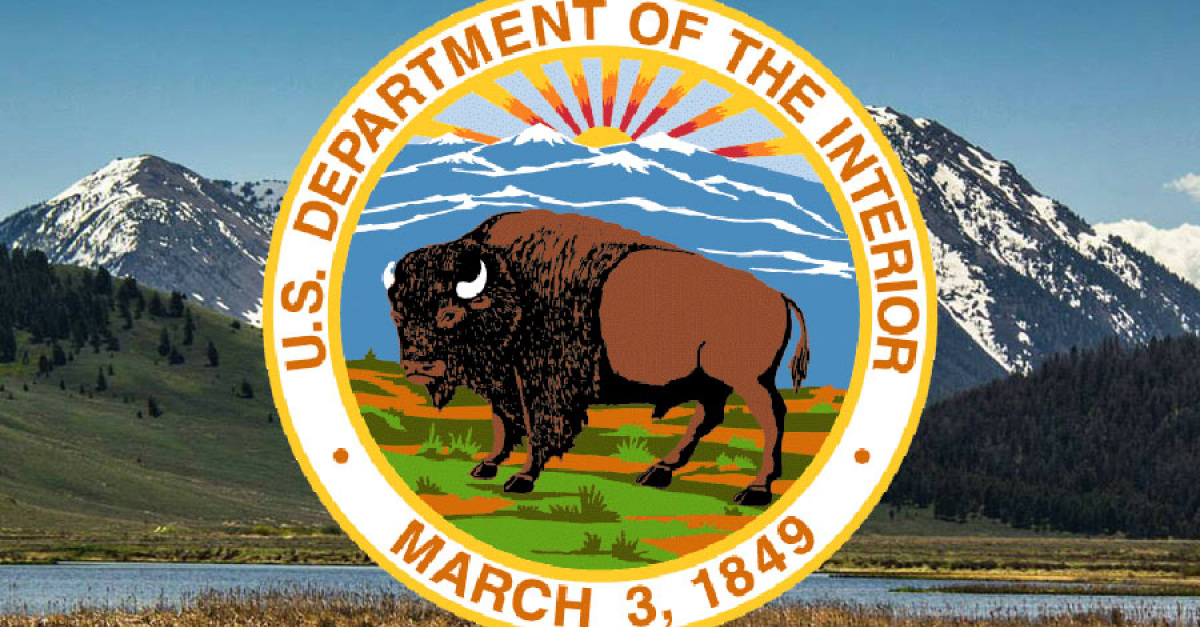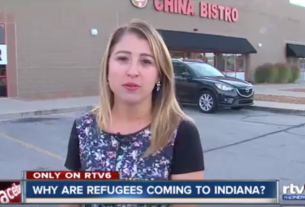
Internal data reviewed by HuffPost reveals how widespread the coronavirus has become within the department.
At least 40 employees across the Department of the Interior have tested positive for COVID-19 and are considered contagious, resulting in mandatory employee quarantines, office closures and deep cleanings, according to internal data reviewed by HuffPost.
Almost every bureau of the Interior Department’s vast agency ― 70,000 employees across 2,400 nationwide offices ― has had at least one employee test positive for the virus. The Interior Department has kept these numbers private, while leaving most public parks and refuges open to the public even as public lands experts warn it could put workers and visitors at risk.
As of Tuesday, 40 Interior Department employees are being treated for coronavirus, with positive cases in offices ranging from the Office of the Solicitor to the Bureau of Reclamation. The daily internal tally of cases across the agency fluctuates, as employees either test positive for the virus, recover or perish, making it unclear the total number of Interior employees over the course of the epidemic who have come down with the virus. The Interior-wide COVID-19 tally, collected daily through bureau self-reporting to a national internal database, offers a window into the department’s ad hoc information-gathering and -sharing measures undertaken as a result of the spreading national pandemic, which has affected staffers across the country.
Bureaus whose duties typically include fieldwork outside of Washington have been hit the hardest, according to the numbers. The National Park Service had the largest number of positive COVID-19 cases among its staff: 10 cases as of April 7 with the tally dropping to eight as of April 10. The tally did not distinguish whether the two employees recovered or died.
The Bureau of Indian Affairs and its education arm, the Bureau of Indian Education, reported seven cases of COVID-19 among its employees, who work largely within Native American communities and are often of American Indian or Alaska Native descent themselves. Those communities often suffer disproportionately from diseases and are considered especially vulnerable to coronavirus; according to internal department figures, 35 tribes have reported at least one case of COVID-19. The Bureau of Land Management reported four cases. It is largely decentralized across the U.S., with 95% of employees outside of Washington (a proportion made greater this year under the bureau’s controversial reorganization). Many of the bureau’s employees are responsible for overseeing public land use and environmental enforcement in some capacity.
The U.S. Geological Survey, which has employees all over the country responsible for field work that includes mapping of earthquake data, also reported four cases. At least 39 employees there have been directed to quarantine as a result of potential exposure, according to the database.
Employees at the Bureau of Safety and Environmental Enforcement, which largely oversees oil production in the Gulf of Mexico, reported four cases of COVID-19 as well. One of the bureau’s field offices is located in New Orleans, a city that has been hit hard by the COVID-19 pandemic.
The Fish and Wildlife Service, the bureau responsible for overseeing wildlife refuges across the U.S., reported three positive COVID-19 cases and has issued quarantine orders to at least 193 employees.
The Interior Department during the course of the pandemic has resisted calls to publicly release the number of confirmed COVID-19 cases within the agency. A handful of agencies, including the Transportation Security Administration and Customs and Border Protection, have been releasing their COVID-19 counts. An Interior Department spokesperson said the agency is tracking all reported positive employee cases of COVID-19 “to ensure proper public health actions are being taken,” and that employees and the public are informed only when there’s a possible risk of exposure. Methods they are putting into place include contact tracing, office and building cleaning and required periods of self-isolation for affected employees.
“President [Donald] Trump has led and coordinated an ‘All-of-America’ strategy to combat the coronavirus pandemic and slow the spread. The Department of the Interior has accordingly done its part to protect the health and safety of the public and our employees by taking significant mitigation actions,” an Interior Department spokesperson said in a statement.
The department would not provide answers to the number of total employees who have tested positive under the pandemic.
“The attitude is, ‘We’re going to keep business as usual for as long as possible. The less information we disclose, the better,’” Jeff Ruch, Pacific director of the Public Employees for Environmental Responsibility, said of Interior’s communications strategy. “It’s like, why break your backs to collect it?”Subscribe to the Politics email.From Washington to the campaign trail, get the latest politics news.
One of Interior’s agencies, the National Park Service, has for weeks faced criticism over the decision to keep the majority of national parks open to the public in some capacity. Interior Secretary David Bernhardt hailed the park system in letters to staff as a great social distancing opportunity for the public, despite staff pushing internally, and in some cases publicly, to close down the parks for safety reasons. The Grand Canyon, a major site of contention, officially closed April 1, after a concession employee in the park tested positive.
A spokesperson for the National Park Service said officials “will only provide public information where an employee presented an exposure risk for the public based on CDC guidance.” They would not confirm the most up-to-date number of COVID-19 cases in the agency.
“Where employees may have exposed any of their colleagues, the NPS Office of Public Health will work with local authorities and the impacted employees to follow proper public health procedures to keep one another safe,” the spokesperson said in a statement.
Contamination concerns extend to U.S. Park Police officers, who are responsible for patrolling major public parks and high-volume tourist destinations in Washington, D.C, San Francisco and New York City ― three of the most heavily hit coronavirus regions. Officers patrol popular sites including the Lincoln Memorial, Golden Gate Bridge and the Statue of Liberty.
At least two USPP officers have tested positive in New York, according to the internal Interior data, a reality that could be disastrous for the small number of officers tasked with overseeing sites.
“Our field offices are literally in the hardest-hit areas,” said Mike Shelton, vice chairman of the union that represents officers, the United States Park Police Fraternal Order of Police. “Police officers are very much scared to come to work.”
There’s currently a third officer in New York who has been tested for COVID-19 and is awaiting results, according to Shelton. The main concern for officers like Shelton, who patrols the George Washington Parkway in D.C., is contamination from the public who continue to visit open sites such as Washington’s National Mall. The park police has already experienced a shrinking of its ranks dating back years due to budget cuts, and any contamination could be a major impact to the group that totals nearly 530 officers nationwide, with approximately 100 officers in New York.
“We’re literally on a skeleton crew to begin with, but now we are concerned because one officer who gets infected can take out an entire station,” he said.
His biggest frustration is a lack of a coherent messaging from Interior leadership.
“The Secretary of Interior has outright refused and ignored the Park Service’s request in certain areas to close parks. He’s exposed all of these officers,” Shelton said. “Quite frankly, the Secretary of Interior has been sending a horrible message and going against what the administration is pushing [on social distancing]. It’s very counterproductive and frustrating that people aren’t on the same page.”
Ruch said the main question now facing Interior is what it will do once statewide stay at home orders are lifted, which he argues is why positive COVID-19 cases aren’t being shared publicly.
“Are they going to be operated any differently? I don’t know. I mean, we haven’t heard an answer,” Ruch said. “If they shared the numbers publicly, they would have to answer the question of, ‘What’s next?’ And they don’t know.”


